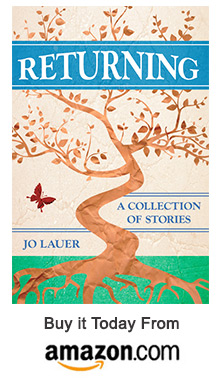I never know when a story idea is going to spring into my mind. I was sitting in my therapy office, waiting for the arrival of a new client, a young man, wondering what sort of experience this would be. From his intake form I noted that depression and anger were his primary issues.
It was ten minutes until the hour. Sometimes I let my mind wander and play with the possibilities of how a new client will look, sound, how they hold their body, what manner of speech will they use–mental entertainment. A smile played on my lips as I imagined an adolescent voice saying, “Doooood,” in that elongated, stoned sort of way. The story began to unfold, but was interrupted by my client’s arrival. I supressed a grin as the young man before me in no way resembled the client in my head.
Over the course of a week, the following story emerged:
“Dude,” he says by way of greeting.
“Dude,” I say as I step back and motion him into the 8 x 10 cell that passes as a therapy room in the psychiatric clinic where I spend my daylight hours. Feeble sunlight filters through a slit of window.
He eyes the sofa, and then my chair.
“Mine,” I say. “Yours,” I point to the couch that matches the colors of the art on the wall behind it.
“Dude,” he says again as he settles his gangly frame onto the couch.
I can’t wait to see how this is going to turn out, I think. So far we’ve transacted business and established turf with one-syllable words.
“I’m Alice,” I venture two syllables, using my first name over the more off-putting “Doctor” that six years of schooling affords me.
He nods. I already know his name of course. I’m holding his chart. I put it on the spindly wooden table next to my chair.
“Drugs,” I give a nod towards his chart.
“Drugs,” he says and gives a what-can-you-do shrug.
He’s twenty-three going on fourteen, dressed in baggy black pants and an oversized sweatshirt with a sports logo on it. Large feet in expensive running shoes with laces undone tap out a rhythm my ears don’t hear. A mop of shaggy hair the color of corn silk brings out the boyishness in his features. His eyes are dark amber, flecked with mahogany. He twirls a baseball cap on his finger as he takes in the room, risks a glance my way.
“Shamus,” I try out his name and wait a beat. “What isn’t working for you right now?” I anticipate a clip remark or a smartass retort heavily laden with denial.
A deep sigh, full of troubled years, disappointments, fears, and frustrations preludes his answer. “Life, man,” he says finally. “Life isn’t working for me.”
“Oh no, not another one,” Sylvie said with a roll of her eyes as I walked in and tossed my briefcase on the étagère.
“What?” I said, embarrassed at being so transparent.
“You’ve got that “rescue sad puppy” look. Another kid? Abused? Abandoned? We have our quota—one dog, one cat. That’s it.”
She knew me well. Sylvie and I had been living together for six years. The first of those years we were lovers. That didn’t work out. We make great family and take liberties with each other we’d never dream of taking with friends. Sylvie saw me through my clinical social work program during which she survived years of neglect and misdirected frustration, although she may not have noticed as she was doing her residency in pediatrics at that time.
“Let me remind you of GeriAnn, over whom you grieved for a month, unable to eat, sleep; you’d burst into tears at the drop of a hat, you could barely function at work,” she said, her eyes holding mine in a “don’t go there” mandate.
“She overdosed,” I complained. “It didn’t have to happen. We failed her,” I pleaded.
“Bullshit, the girl was a drug addict.” Sylvie’s tough love approach to the heartache that came with the territory of working with troubled teens was belied by the quiver of her bottom lip and the break in her voice. I loved that about her.
The next week Shamus sat on the couch in my office, his eyes fixed on a point outside my window.
“What are you looking at so intently?” I asked.
“Wind,” he said, as if it should be obvious.
“You mean the effect of wind—like branches blowing, clouds drifting…” I clarified.
“No; just wind.” He brought his attention back into the room, squinted at me as if gazing through a bank of fog, and allowed me to finish the intake form.
I relayed the eerie quality of Shamus’ session to Sylvie during dinner that night.
“So, did you ask?” she said, giving me that piercing look that suggests I’ve missed an incredible opportunity.
“Did I ask what?”
She sighed. “What wind looks like, of course. Aren’t you curious?”
“Wind doesn’t look like anything; it’s invisible,” I said, sounding oddly defensive even to myself.
“I wonder if it looks different than breeze, for instance…” she mused, lost in thought.
The following week, Shamus sat looking at the floor.
“Something on your mind?” I inquired. “You appear to be avoiding eye contact with me,” I observed aloud.
“There’s too much stuff in the room…” he said.
I glanced around the room; there was the same amount of “stuff” as there was the previous two weeks—sofa, chair, desk, small table, lamp.
“…between here and there,” he said, gesturing the distance between us.
Sylvie’s voice rang out in my mind, “Did you ask?” I leaned slightly forward in my chair and asked,
“Can you tell me about the stuff you see?”
He raised his chin slowly; his eyes seemed to refocus like when you come from the sunlight into a darker room. A hint of a smile played on his lips and his shoulders relaxed for the first time since we’d met. The next moment, it was as if a dark cloud had moved in suddenly and shrouded him. He turned away, lips pressed tightly together.
“Shamus, what just happened? You were going to tell me something, then you stopped yourself,” I shared my speculation.
“You wouldn’t believe me; no one does,” he said, his voice a mere murmur.
“I want to understand your experience, Shamus,” I said, noticing for the first moment that I really did want to know what was going on in his mind. At that moment I wanted to know so badly that tears were brimming in my eyes. I blinked to clear them.
It’s a common phenomenon in therapy for the therapist to actually feel the feelings the client is unable or unwilling to feel. I took a big risk and said, “I’m feeling incredibly sad right now; I’m not sure why.”
When he turned his head to face me again, tears rolled silently down his cheeks. He put his hands to his face and patted the wetness as if unsure it was coming from him.
“I’m thinking you’ve been holding onto something way too long,” I shared. “Are you ready to take a risk and tell me about it?”
A moment passed, then he said simply, “I see space.”
I merely nodded, prompting him to go on.
“Between solid objects, where other people see only emptiness…” he looked at me to see my reaction.
I kept my face neutral and nodded again.
“I see molecules; billions of them, smaller than the ones that make up solid objects. They’re in constant motion. They’re everywhere—there’s nowhere that they’re not.”
“My God,” I uttered, overwhelmed by the very thought.
“I used to think I was crazy. It wasn’t until Science class in the fifth grade when we learned about molecules, that I understood what it was. I must just have really, really good eyes.” He folded his hands in his lap and stared at them.
This young man has had to create a different language to explain his experience of life, one that no one else shares. There’s no respite. How do you even keep your balance when the world is in constant motion around you? Shamus, indeed, saw air. Now the drugs make sense! The isolation of living a life like this tore at my heart. I was speechless. I put my hand over my heart and patted it gently.
Shamus looked up, took note of my gesture; he raised an eyebrow, and with a shrug he said, “You asked.”










Another home run, Doood. Love this story. And, by the way, I know this is supposed to be fiction, but now I know I'm not the only who sees air/molecules. Only, I usually only see them at night when it's really dark.